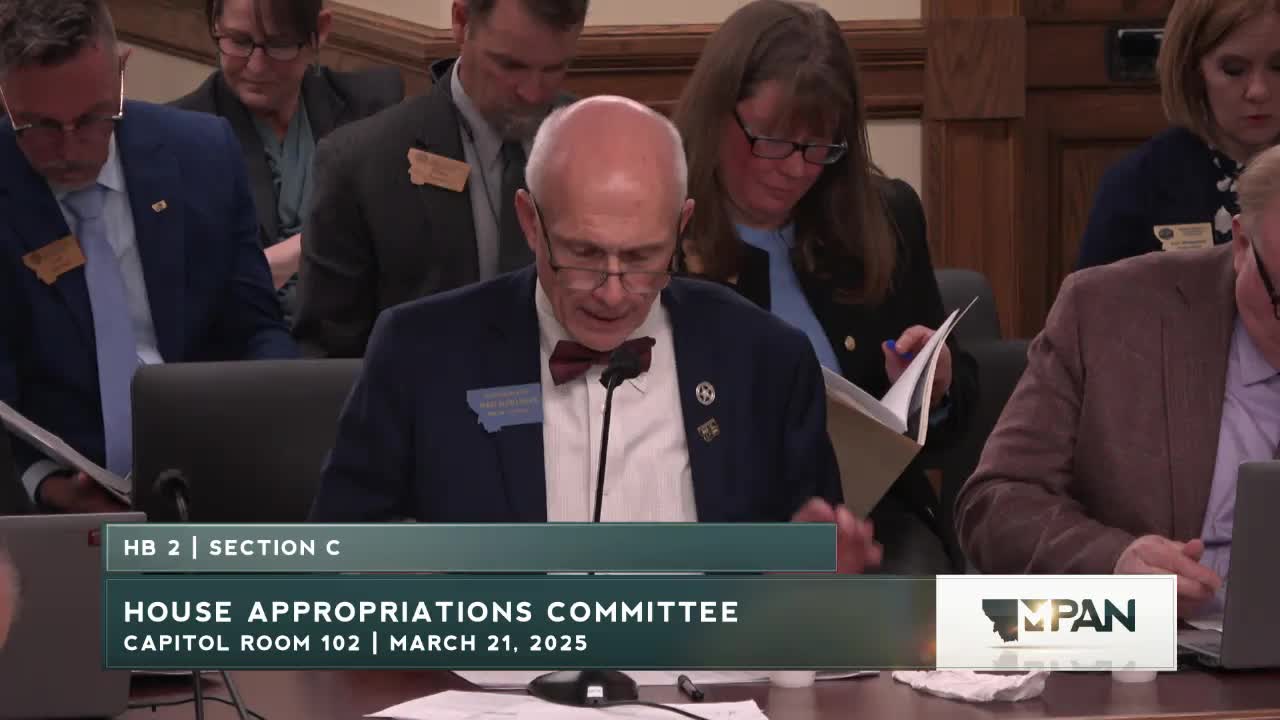Montana legislature approves $15.1M budget increase for DNRC and water management projects
March 21, 2025 | 2025 Legislature MT, Montana
This article was created by AI summarizing key points discussed. AI makes mistakes, so for full details and context, please refer to the video of the full meeting. Please report any errors so we can fix them. Report an error »

The House Appropriations Committee of the Montana Legislature convened on March 21, 2025, to discuss significant budgetary adjustments for the upcoming biennium. The committee approved a budget increase of $15.1 million, representing an 8% rise compared to the previous biennium. This increase is primarily allocated to cover personal services, inflation, and fixed costs.
Key highlights from the budget include $4.1 million earmarked for adjustments in personal services and fixed costs, alongside funding for critical IT projects such as a water rights database and a water measurement database. The Department of Natural Resources and Conservation (DNRC) will also receive funding for the trust lands management system, which is essential for managing state trust lands.
Additional allocations include $2.3 million for ServiceNow programmers and $2 million for water storage projects, which are tied to ongoing legislative efforts. The budget also addresses the needs of irrigation districts with $720,000 for grant management personnel and approximately $681,000 for bridge replacements.
The budget reflects a general fund increase of $9.1 million, or 11.8%, and a state special revenue increase of $5.9 million, or 5.5%. Notably, the committee's adopted budget is $931,000 higher than the executive proposals, with a $1.2 million increase in the general fund and a reduction of $38,120 in fixed costs.
In terms of personal services, the legislative budget saw a 5.1% increase, amounting to $2.6 million compared to base funding. This includes adjustments for overtime and the addition of five new positions. Specific allocations for these positions include $712,000 for 2026 and $838,000 for 2027, along with funding for ServiceNow developers.
Overall, the meeting underscored the legislature's commitment to enhancing state services and infrastructure through strategic budget increases, while also addressing operational needs within various departments. The next steps will involve implementing these budgetary changes and monitoring their impact on state operations.
Key highlights from the budget include $4.1 million earmarked for adjustments in personal services and fixed costs, alongside funding for critical IT projects such as a water rights database and a water measurement database. The Department of Natural Resources and Conservation (DNRC) will also receive funding for the trust lands management system, which is essential for managing state trust lands.
Additional allocations include $2.3 million for ServiceNow programmers and $2 million for water storage projects, which are tied to ongoing legislative efforts. The budget also addresses the needs of irrigation districts with $720,000 for grant management personnel and approximately $681,000 for bridge replacements.
The budget reflects a general fund increase of $9.1 million, or 11.8%, and a state special revenue increase of $5.9 million, or 5.5%. Notably, the committee's adopted budget is $931,000 higher than the executive proposals, with a $1.2 million increase in the general fund and a reduction of $38,120 in fixed costs.
In terms of personal services, the legislative budget saw a 5.1% increase, amounting to $2.6 million compared to base funding. This includes adjustments for overtime and the addition of five new positions. Specific allocations for these positions include $712,000 for 2026 and $838,000 for 2027, along with funding for ServiceNow developers.
Overall, the meeting underscored the legislature's commitment to enhancing state services and infrastructure through strategic budget increases, while also addressing operational needs within various departments. The next steps will involve implementing these budgetary changes and monitoring their impact on state operations.
View full meeting
This article is based on a recent meeting—watch the full video and explore the complete transcript for deeper insights into the discussion.
View full meeting
